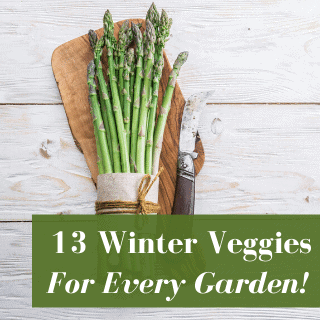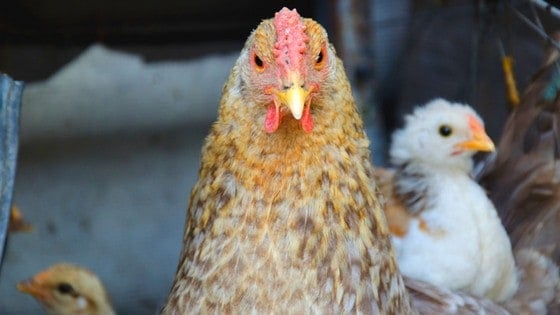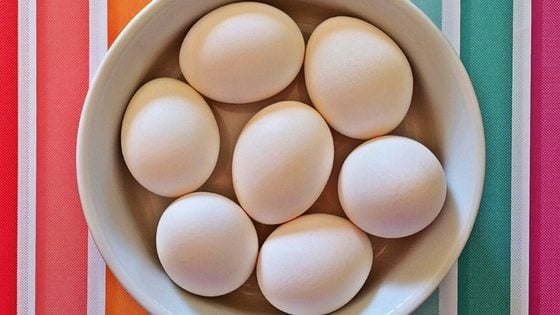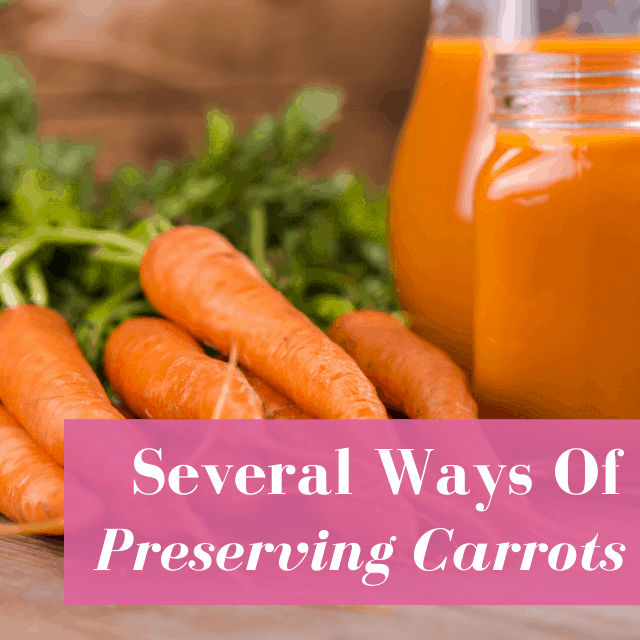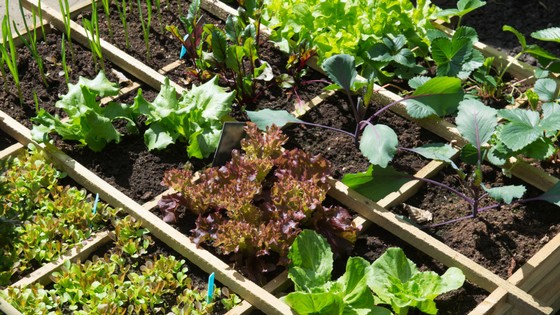Are you super excited about growing your own food? Need to know exactly what the fastest growing vegetables are? You’re in luck – that’s the topic of today’s article!
Back in the day, I was pretty impatient in my garden. I only wanted to plant the fastest growing vegetables, so I could have a super quick harvest. This led to growing lots of radishes, because I didn’t know all of my options!
If you think that all vegetables take from spring to fall to mature, then you, my friend, have been lied to. Whether you’re getting a late start on your garden or you live in a region with a short growing season and want to learn more ways to optimize your brief time, don’t worry – there are plenty of ways to extend the life of your garden. To get started, we recommend choosing some of these fastest-growing vegetables for your garden.
Table of Contents (Quickly Jump To Information)
The 20 Fastest-Growing Vegetables for a Speedy Harvest
1. Radishes
Not only one of the fastest-growing vegetables but also one of the most delicious, radishes are ready for harvest just 25 to 30 days after planting. The radish is a great plant for those of us who live in areas with short growing zones, too, as they can be planted once in the spring and once in late summer to allow them to enjoy cooler growing conditions. Too much heat can make them taste woody! Look for a quick-maturing variety such as Purple Plush, Watermelon, Black Spanish, or French Breakfast for best results.
2. Green Onions
Onions seem to take forever to mature – up to six months in many cases. However, you can make the most of a short growing window by harvesting the green onions talks. These are ready for harvest in just three or four weeks!
3. Kale
Kale is one of the best leafy greens to grow if you are looking for one of the fastest-growing vegetables for a cold growing zone. Kale can be grown year-round in many locales, and well into the fall in zones like 3 and 4.
Not only will you yield a plethora of healthy, bountiful greens, but you won’t have to wait long after planting, either. Most take just 50 to 65 days to mature, but you can also harvest tender immature leaves as soon as three weeks after planting!
4. Lettuce
Lettuce is a great crop to grow if you are interested in planting via succession planting. You can plant multiple rounds of lettuce each year, since most leaf varieties are ready just 30 days from planting. Cut the leaves once they’re two or three inches tall, and keep cutting until the plant bolts.
5. Turnips
In most cases, turnip roots can be harvested in just 60 days – but if you don’t want to wait that long, you can also harvest the leaves after waiting for just 40 days.
6. Arugula
Arugula is a tasty green with a peppery flavor. A perennial in some areas, it also matures quite rapidly. It takes less than two months to produce mature leaves, and you can continue cutting leaves whenever you want to enjoy them.
7. Peas
Peas are cold-hardy crops and they’re also quick to germinate and mature. The seeds typically take ten days to germinate and are ready to be harvested in just 60 short days.
8. Spinach
Spinach is another great crop for succession planting. The leaves will be ready in as little as one month from planting, meaning you can get multiple crops in one season. Plus, spinach is exceptionally cold hardy, so you can grow it well into the late autumn months in many areas. People who live in warm growing zones may be able to plant and harvest spinach year-round!
9. Bush Beans
Not all bush beans mature quickly, but there are plenty of varieties, like Topcrop and Provider, that can be harvested in as little as 50 days. If you’re planting beans for a quick production, always select bush beans instead of pole beans – they mature much more quickly.
10. Baby Carrots
Carrots aren’t known for being the fastest-growing vegetables, but you can optimize a short growing season by harvesting baby carrots. There’s no special trick here – just plant your carrot seeds as you normally would and harvest the tiny tubers 30 days later.
11. Summer Squash
Not all squash is fast-growing, but there are certain varieties of summer squash that are ready in just 70 days. Summer squash, which requires warm conditions in order to produce, will always grow more quickly than winter squash.
12. Cucumbers
Some varieties of cucumbers can be harvested just 50 to 70 days from planting – but if you’re impatient, you can always harvest the tiny fruits, too.
13. Beets
Beets are some of the fastest growing vegetables, particularly if you want to grow a fantastic cold-hardy crop. Beets don’t like a lot of heat, so it’s best to plant for an early spring crop as well as for a fall crop. You can harvest the roots in just 50 days, but the greens can be plucked in just 30.
14. Okra
Okra isn’t the easiest vegetable to grow, but it is one of the fastest-growing vegetables. It only takes about 50 days to mature.
15. Bok Choy
Bok Choy isn’t only a fun name to say – it’s a fun plant to grow. This quick-growing vegetable is mature in just 30 days.
16. Broccoli and Broccoli Rabe
Both broccoli and broccoli rabe can be grown in a short amount of time. Like beets and spinach, broccoli is a cold-season crop that grows well when the temperatures are a bit nippy. It takes just 60 days to produce mature heads, and you can get a continuous harvest as long as you continue to trim heads before they flower and go to seed.
Broccoli rabe, also called rapini or rabi, looks like broccoli and grows like broccoli but is actually a closer relative to the turnip. This plant should be harvested as soon as the flower clusters appear – the stems are edible, too, and also fast maturing.
17. Chinese Cabbage
Chinese cabbage can be harvested in a mere matter of weeks. Producing firm heads, this plant grows best in partial shade, so it isn’t always suited to the hot temperatures of summer.
18. Cress
Another unique green to grow is cress. This plant has a delicious peppery flavor and can be harvested in just a few weeks. You can sow successively for a continual harvest, but keep in mind that cress does not grow well in hot weather – it becomes too peppery.
19. Microgreens
If you haven’t heard of microgreens yet, they’re fast becoming a popular alternative to traditional salad greens. You can sprout microgreens from just about any type of plant – although arugula, spinach, celery, and chives are some of the most popular choices. They’re ready in just a few days, as you are eating the seedling and not the actual mature plant.
20. Mustard Leaves
Mustard is yet another green that grows well – and grows quickly – in cool weather. It is sensitive to heat, producing its best growth in early spring and fall. Give it some shade if you can’t grow it during these times of the year, but keep in mind that it will be ready for harvest in less than a month.
Tips for Producing the Fastest Growing Vegetables
If you think you don’t have what it takes to grow speedy veggies, you’re mistaken. Here are some quick tips to follow when you’re hoping for an equally expedient harvest.
Use Balanced Natural Fertilizers
Fertilizer can help jumpstart the growth of your vegetable garden, but you have to know what you’re doing. A synthetic fertilizer often is too imbalanced for sensitive veggies, but a balanced organic fertilizer (like compost) can give your plants the nutrients they need for a quick jumpstart. Apply fertilizer before planting, but make sure you always test your soil first to ensure you are giving your plants exactly what they need.
Plan Carefully
Time out your plantings ahead of the growing season. This will allow you to make the best use of your growing space without things feeling cramped or overcrowded. Sketch out a map of your garden and pull up a calendar to make sure no space is being wasted!
Consider a Greenhouse or Cold Frame to Extend the Season
If you live in an area with a brief growing season, you might want to consider growing some crops in a greenhouse or a cold frame. Even if you are lucky enough to live in a warm region, these facilities can drastically reduce the amount of time it takes you to grow certain vegetables.
Seeds will germinate more quickly and plants will mature more rapidly when they are provided with plenty of sunlight and heat – which these structures can provide.
Plant in Raised Beds
It’s no secret that raised beds warm up more quickly and hold heat better than the soil on the ground. If you want to help your spring-sown seedlings mature more quickly, consider planting them in raised beds instead of directly in the ground. The same rule applies to planting in containers!
Plant in Triangles
For plants that seem forever to set fruit after they’ve flowered, you might want to plant in triangles. Not only will this make it easier for pollination to occur, but it will also provide for maximum utilization of every square inch of your garden. A faster harvest, plus efficiency? A win-win.
Choose Compatible Pairings
When you grow plants that naturally complement each other, like beans and corn, you make it easier for them to harness their natural growing abilities for a faster harvest. The theory behind this strategy is this – by choosing plants that work together to repel pests, provide nutrients, and retain moisture, your plants will have to do less “catching up” and can focus all their energy on simply growing.
Why You Should Plant Fast Growing Vegetables
There are lots of good reasons to plant fast-growing or quick-maturing varieties of plants, but only you can decide if this option is best for your gardening plan.
However, keep in mind that fast-growing vegetables offer a great way to maximize your yields. If you are growing in a greenhouse, a fast-growing vegetable can help you get as many plants as possible in a year. If you’re growing outside, fast-growing vegetables allow you to get the most bang for your buck per square foot of growing space.
Whatever your motivations for growing quick crops might be, we hope you will find this list of the fastest growing vegetables helpful as you plan out your garden!
Maat van Uitert is a backyard chicken and sustainable living expert. She is also the author of Chickens: Naturally Raising A Sustainable Flock, which was a best seller in it’s Amazon category. Maat has been featured on NBC, CBS, AOL Finance, Community Chickens, the Huffington Post, Chickens magazine, Backyard Poultry, and Countryside Magazine. She lives on her farm in Southeast Missouri with her husband, two children, and about a million chickens and ducks. You can follow Maat on Facebook here and Instagram here.

